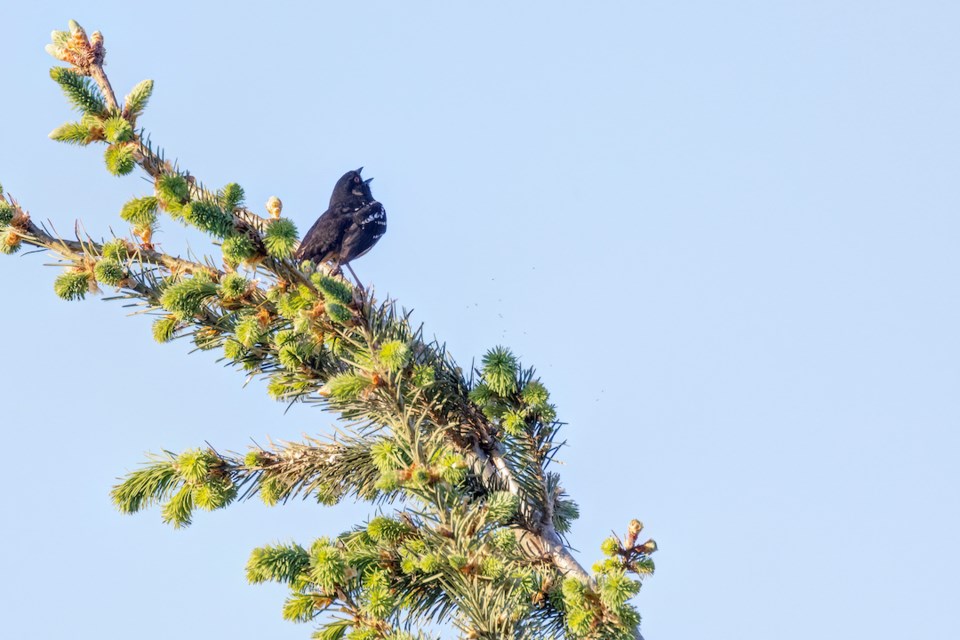One of the most famous poems in English literature is Robert Browning’s Home Thoughts from Abroad where the poet waxes lyrical about springtime in England and pays homage to the sights and sounds of the chaffinch, the thrush and the swallows. One can only contemplate, and regret, what Browning might have made of springtime on the Sunshine Coast!
After a warm early winter, followed by a record cold snap in mid-January, the weather settled into a long period of single-digit temperatures that left the locals muttering about when spring would finally arrive. The answer was March 13, when a warm front began flooding the province, bringing summer-like weather to the Sunshine Coast. The immediate response to the weather was not from the birds but the butterflies. Butterflies are slaves to temperature and when the temperature reaches 10C (and much warmer in the sunshine) then our early butterfly species emerge from hibernation and take to the wing. The most obvious species is the Mourning Cloak, a large brown butterfly with an outer ring of cream colour. Two other species have been reported to date, a comma and Milbert’s Tortoiseshell. The butterfly season runs from March to October and 42 species have been recorded on the Sunshine Coast.
During March, our first migrant bird species arrive from the south, and perhaps the most obvious to many people is the passage of flocks of trumpeter swans overflying our area to a vast area of northern Canada and Alaska, with hundreds of birds reported March 13 to 18. The swan passage is in March and should not be confused with that of another white bird, the snow goose, which generally passes in April (though one early flock has already been reported).
Other migrant species that have appeared so far are turkey vulture, band-tailed pigeon, violet-green swallow and yellow-rumped warbler. There have been single reports of rufous hummingbird and orange-crowned warbler. Two western meadowlarks were reported at the airport with one bird singing, which is always a bonus in our area.
Some of our resident, year-round, garden species are now in full song as the males sing to attract a mate and then to announce their territory to others. These songsters include Pacific wrens, spotted towhees, song sparrows and house finches. Robins, which are uncommon in winter, are flooding back by the thousands, and noisily announcing their presence.
Referring back to my first paragraph, I was sitting on my deck in the 6-7 p.m. sunshine, watching the sun finally disappear behind South Thormanby Island…the pink flowering cherry in full bloom, the sky a contrasting blue, and listening to the spine-tingling fluting of unseen varied thrushes. It was an intoxicating ambience. Is there a Robert Browning in the house?
To report your sightings or questions contact [email protected] or 885-5539. Good Birding.




-2.jpg;w=120;h=80;mode=crop)